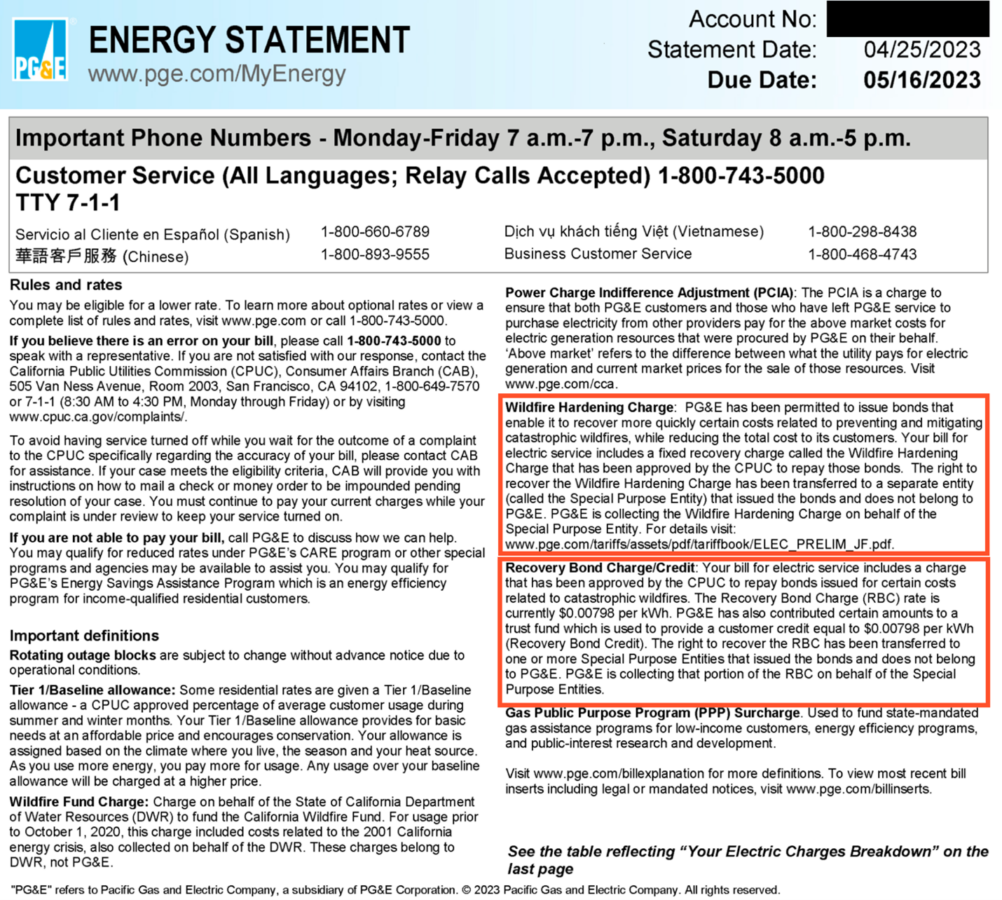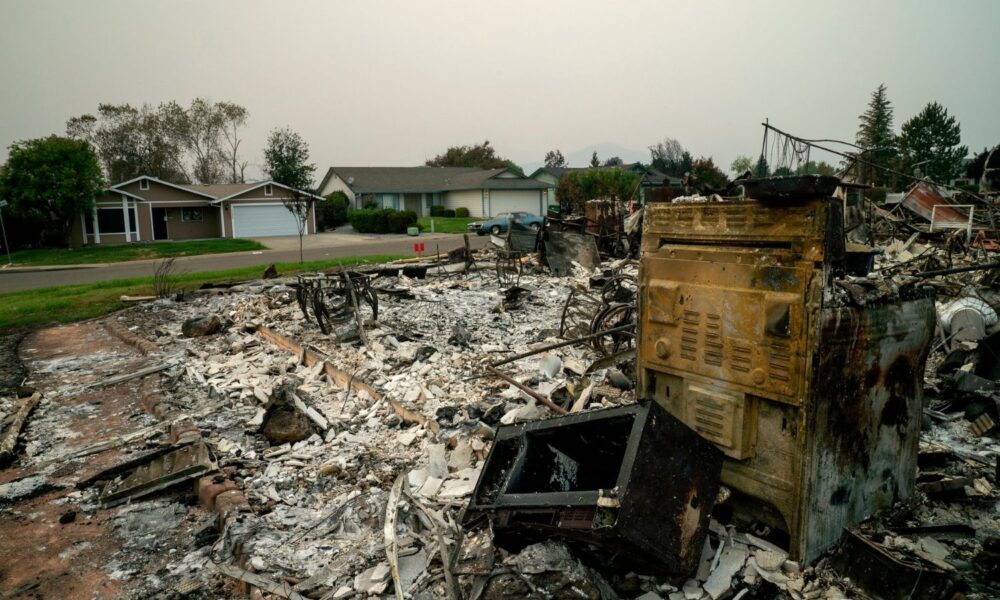Today, the Union of Concerned Scientists released a study that really caught my attention. I usually try to stay in my cozy power sector bubble, plugging away on electricity grid decarbonization. But this new study from my colleagues working on climate change and fossil fuel accountability couldn’t be ignored.
The reason: the findings of this study could ultimately have significant consequences for western electric utilities and the communities they serve.
In short, the study concludes that fossil fuel companies are in part to blame for the extraordinary damages resulting from western wildfires (including those sparked by utilities). And as a result, those fossil fuel companies should shoulder some of the costs related to wildfires.
You’ll remember that California utilities have already spent tens of billions of dollars to pay for wildfire mitigation and damages, so I sat up straight when I read the report’s conclusion.
It takes a few steps to arrive at those conclusions, so I’m going to connect the dots between UCS’s new report, The Fossil Fuels Behind Forest Fires, and the implications for western electric utilities.
Fossil fuel companies bear some responsibility for western wildfires
The science behind UCS’s new analysis uses the following series of relationships to arrive at its conclusions:
- Emissions from fossil fuel companies’ operations and products have increased the global average temperature.
- Increases in the global average temperature have led to an increase in vapor pressure deficit in western North America, which is essentially a measure of the power of the air to dry out plants and trees.
- Increases in vapor pressure deficit have led to an increase in the area burned by forest fires.
While all these relationships are relatively well-understood, UCS’s study was the first to string all of these relationships together and utilize attribution science to determine the contribution of the world’s largest carbon producers towards western wildfires. (For reference, the world’s 88 largest carbon producers are responsible for nearly 60% of global warming emissions since 1880.)
The study found that 37% of cumulative burned forest area in the United States over the last few decades is attributable to emissions from 88 of the world’s largest fossil fuel producers and cement manufacturers. That equates to 19.8 million acres up in smoke, destroying homes, businesses, and even taking people’s lives.
The inevitable conclusion is that those fossil fuel companies should be responsible for paying for their share of the destruction, and they should also be responsible for funding wildfire mitigation efforts to prevent wildfires in the first place.

Utilities are, still, also responsible for wildfires
To be clear, I am not arguing that PG&E and other electric utilities should be let off the hook for all the fires they’ve started. I recently finished reading California Burning: The Fall of Pacific Gas and Electric – and What it Means for America’s Power Grid, and the book served as an excellent reminder of the grossly negligent utility behavior that ignited some of the most catastrophic wildfires to date.
Pacific Gas and Electric (PG&E) has become the poster child of utilities that cut corners and jeopardize safety in the relentless pursuit of profit. PG&E was found criminally negligent due to its failure to properly maintain its electricity infrastructure, ultimately resulting in horrific wildfires that destroyed entire communities, claimed more than 100 lives, and drove the utility into bankruptcy.
PG&E’s wildfire-related failures were twofold.
PG&E’s first and most significant failure was its unbelievably negligent “run to failure” approach, where the company replaced much of its grid infrastructure only after it broke.
In the most notorious example, the snapping of a badly-worn 100-year old hook caused a transmission line to drop to the ground, sparking the Camp Fire, the deadliest wildfire on record in California. It was a clear case of PG&E having prioritized shareholder profits over inspection programs and public safety.
PG&E’s second failure was its inability to recognize the impacts of climate change unfolding before its eyes. As California’s forests morphed into a tinderbox due to years of drought, bark beetle infestations, and a long history of fire suppression, PG&E downplayed the wildfire risk in Northern California. PG&E resisted a requirement for the company to create a wildfire mitigation plan, and California utility regulators acquiesced. In contrast, regulators have required Southern California utilities to submit wildfire mitigation plans for over a decade.
When PG&E finally reckoned with the true extent of the fire risk in its service territory, it was too late. PG&E’s infrastructure was sparking devastating wildfires left and right, and years of the “run to failure” approach left PG&E with a maintenance backlog that will take years to clear.
Unfortunately, PG&E isn’t alone. Though other utilities haven’t been found to be as grossly negligent as PG&E, utilities in California and the rest of the west have sparked devastating wildfires that claimed lives and cost hundreds of millions of dollars.
Like PG&E, other utilities vastly underestimated the potential for their infrastructure to start significant wildfires, and many utilities have only just begun to make the vital system upgrades necessary to minimize the risk of wildfire ignitions.

It takes two
On the one hand, the world’s largest emitters created the conditions for catastrophic western wildfires by pumping global warming emissions into the atmosphere (even when they knew about climate change for decades).
On the other hand, every wildfire starts with a spark, and utility infrastructure has been sparking wildfires with alarming frequency. Utilities like PG&E have neglected their infrastructure to the point where it is quite literally falling apart and starting fires in the process. Other utilities have been far too slow to recognize and address the increasing risk that their power lines will spark wildfires.
Let’s put this all together: it takes two to create disasters of this magnitude.
Without the emissions from the 88 largest fossil fuel producers and cement manufacturers, western wildfires wouldn’t have been as extreme. Without sparks from utility power lines, many of these fires wouldn’t have happened at all.
Who pays the bill?
With the impacts of climate change already upon us, time is short for electric utilities to catch up. Not only must utilities mitigate further climate change by rapidly transitioning to clean sources of electricity, but they also must adapt to climate change by upgrading infrastructure to withstand more extreme weather.
In the case of western utilities, climate change adaptation will require massive investments to minimize the risk of utility-caused wildfires. These investments include trimming trees near powerlines, installing insulated power lines, building microgrids, installing devices that automatically shut off power lines when they break, undergrounding power lines, and when all else fails, having systems in place to preemptively shut off power.
Utilities have begun making these necessary investments, and electricity bills are going up as a result. But because clean and affordable electricity is the key to decarbonizing the economy, higher electric bills are turning into an obstacle to achieving climate change goals. For example, if electricity becomes too expensive, drivers won’t save money by switching to an electric vehicle and homeowners won’t save money by switching to electric heating. Ultimately, we’ll need to find ways to pay for utility wildfire mitigation that don’t hamper electrification efforts.

And that’s where fossil fuel companies enter the picture.
The UCS study asserts that these companies should pay “their fair share of the costs of climate-related damages and climate change adaptation—including the costs associated with wildfire prevention, suppression, and recovery.”
And I think that’s exactly right.
Many states and communities are already suing fossil fuel companies for their deceptive behavior that has fueled the climate crisis, and plaintiffs are seeking damages to help pay for the costs of adapting to a changing climate. Boulder, Colorado, is one such community that filed suit, and only a few years later the most destructive wildfire in Colorado history struck Boulder County.
I can’t say exactly who should be suing fossil fuel companies for wildfire mitigation and damages—it could be utilities, cities, states, customers, or all of the above. But this new UCS analysis makes it clear that these companies are partially to blame for increasingly destructive western wildfires.
They should have to pay their fair share.

